Multimedia Content
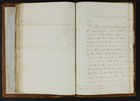
Letter from Charles La Trobe to Chairman of Council, 21 August 1843, courtesy of Public Record Office Victoria, Victorian Archives Centre.
Details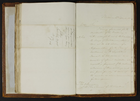
Letter from Charles La Trobe to Chairman of Council, 4 September 1843, courtesy of Public Record Office Victoria, Victorian Archives Centre.
Details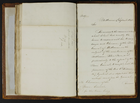
Letter from Charles La Trobe to Chairman of Council, 4 September 1843, courtesy of Public Record Office Victoria, Victorian Archives Centre.
Details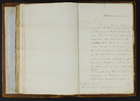
Letter from Charles La Trobe to Chairman of Council, 9 September 1843, courtesy of Public Record Office Victoria, Victorian Archives Centre.
Details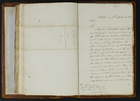
Letter from Charles La Trobe to Chairman of Council, 9 September 1843, courtesy of Public Record Office Victoria, Victorian Archives Centre.
Details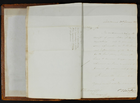
Letter from Charles La Trobe to Mayor, 20 January 1843, courtesy of Public Record Office Victoria, Victorian Archives Centre.
Details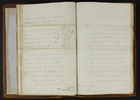
Letter from Charles La Trobe to Mayor, 16 March 1843, courtesy of Public Record Office Victoria, Victorian Archives Centre.
Details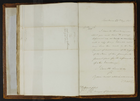
Letter from Charles La Trobe to Mayor, 22 May 1843, courtesy of Public Record Office Victoria, Victorian Archives Centre.
Details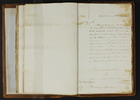
Letter from Charles La Trobe to Mayor, 8 June 1843, courtesy of Public Record Office Victoria, Victorian Archives Centre.
Details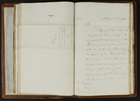
Letter from Charles La Trobe to Mayor, 3 July 1843, courtesy of Public Record Office Victoria, Victorian Archives Centre.
Details
Police and Policing
Three constables from the Sydney Police Force arrived in Melbourne with Captain William Lonsdale on 1 October 1836. Much of their work involved enforcing the Sydney Police Act 1833, derived from the London Metropolitan Police Act 1829, which was extended to include Melbourne on 5 November 1838. The legislation was largely concerned with town administration. Alongside such tasks as inspecting abattoirs and destroying stray animals, early constables spent much of their time arresting drunkards. The early police had no uniform and were identified solely by a hatband bearing the words 'Melbourne Police'.
The Melbourne Police existed alongside a Native Police Corps, formed in 1842 to protect outlying settlements outside Melbourne from Koorie attack, and the Williamstown-based Water Police, formed in 1841, who checked on the port and searched for runaway sailors. Complaints that police numbers were too small appeared from 1838, fuelled later by fears that convicts from Van Diemen's Land were congregating about the courts and alleys in the centre of town. Although the first constables were all dismissed for drunkenness, by the late 1840s Melbourne's police, then numbering 40 constables, were being described as 'a respectable and well disciplined body of men'.
With the discovery of gold this small force was quickly overwhelmed. Immigrants flooded into the colony, and many police abandoned their posts to pursue dreams of riches. On one day in November 1851, 50 of the 55 members of the Melbourne City Police resigned, leaving the force in a state of total disarray. Various experiments in recruitment were trialled in the early 1850s, the least successful of which was the recruitment of military pensioners from Van Diemen's Land, described by one police official as 'the most drunken set of men I have ever met with'. Efforts to recruit trained police from England met with more success, with 53 men who had served in the London Metropolitan Police, known as the 'London Fifty', enlisted in May 1853.
Authorities were also troubled by the implications of a roving population and remained anxious that a significant criminal element existed among those who had entered the colony in search of gold. In 1853 policing was reorganised, and police numbers were substantially increased. The Police Regulation Act 1853 amalgamated the colony's seven autonomous police forces and created the position of chief commissioner of police, a full-time police administrator who would oversee policing throughout the colony. The Act stipulated that intending constables had to be of sound constitution, able bodied, under 45 years of age, able to read and write and 'of good character for honesty, fidelity, and activity'.
Melbourne's newly organised police were clearly identified by their uniforms, adopted in 1853 and identical to those of the London Metropolitan Police. Policing in Melbourne was based on the civil model of the London Metropolitan Police, the central feature of which was the police beat. Beats in Melbourne were first devised by Superintendent Samuel Freeman, who had served in London for fourteen years. The police were intended to be a preventative force, discouraging crime and encouraging order through their smart appearance and impeccable manner. Not all lived up to such ideals, however, and many constables were prosecuted for being drunk or falling asleep on their beat.
Victoria was early in getting a specialised Detective Force, founded in 1844 to check on the 'criminal class'. Detectives formed networks of informers, known as 'fizzgigs', from among the associates of ex-convicts. Suspicions of corruption in the Detective Force were raised as early as 1852, with one magistrate suggesting 'there have been, in the case of several detective officers, a most suspicious suddenness in getting rich'. By the 1880s corruption within the Detective Force had become a public scandal. Detectives were severely criticised by the 1883 Longmore Commission, not only for their dubious information-gathering methods, but also for their lack of accountability. The autonomous Detective Force was subsequently disbanded and replaced by a Criminal Investigation Branch connected to the general police force.
The 1883 royal commission also concluded that much public immorality in Melbourne resulted directly from the corrupt and inefficient administration of the Police Department. Open prostitution and larrikinism were blamed on the fast living of several senior officers, the incapacity and misconduct of others and lax discipline throughout the police force generally. In the years following the royal commission, Melbourne police increasingly focused on prostitution, betting and gambling, hotels and street behaviour previously tolerated or only sporadically policed. While stricter policing owed something to reforms within the police, much of it resulted from the social reform movement and its relentless campaigns for police action. From the 1880s to the 1920s moral standards may have risen, but police-community relations suffered.
A number of early 20th-century developments mirrored international trends in criminal investigation and patrol work. In 1903 a Fingerprint Branch was established at Russell Street, and its achievements in combining science and police work were much applauded in the press. The use of photography in criminal identification also became more widespread, with photographs of discharged prisoners published in the Victoria Police Gazette from 1906. Bicycles, motorcycles and motor cars also began to feature in police work after World War I, with the first motor patrol formed in 1921. In 1917, following a concerted campaign from the National Council of Women, the first women police were appointed as 'police agents'. Numbering four by 1923, policewomen remained for many years in a restricted welfare role, dealing primarily with young women on the streets and cases of neglected children.
While such innovations attracted public attention, the constable on the beat faced poor pay, long working hours and declining conditions. In 1902 considerable disgruntlement resulted when the government abolished the payment of police pensions to retiring members of the police force. A Police Association was formed in 1917, but it proved to be a less militant body than many of its counterparts in other Australian States and failed to give voice to the festering dissatisfaction in the ranks. These grievances culminated in the 1923 police strike, when one-third of police refused to go on duty and Melbourne was plunged into mayhem on the eve of the Melbourne Cup.
The interwar years saw the appointment of the vehemently right-wing Thomas Blamey as chief commissioner. Dedicated to the suppression of communism, working-class radicalism, trade unionism and any form of popular protest, Blamey did little to enhance relations between police and community against a background of economic depression and chronic unemployment. His instruction that unemployed workers marching through the streets should be 'hit over the head' represents a nadir in Melbourne policing. With his administration riddled by corruption, scandal and secrecy, Blamey was forced to resign in 1936.
Wartime demands saw developments in both communications technology and police-community relations. In December 1939 the police communications centre, known as D.24, was established, and in April 1940 the force switched from wireless telegraphy to wireless telephony. Two-way and one-way radios were fitted to over 70 police vehicles, putting large numbers of police in contact with a central radio command. Broadcasts from the police radio centre, which could be heard by all Melburnians with a wireless set, became a fireside favourite, rivalling commercial broadcasts. The public image of modernity and efficiency was further promoted by the opening, in 1943, of a modern ten-storey police headquarters in Russell Street, crowned by a prominent radio tower. This period also saw the birth of a serious interest in public relations, with a public relations office and press bureau formed in 1946.
While projecting an image of modernity, the police force struggled in the postwar years. A widespread recruitment drive increased the ranks of the police with many ex-servicemen, but the force remained understaffed for much of the 1950s. In buoyant economic times, police work failed to entice recruits from more lucrative occupations. Police work also changed. As car-ownership boomed, more time was spent regulating motorists. As motorists generally resented their interactions with police, such work did little to enhance relations with the public. Some relief from the burden of motor registration came in 1981, when the Road Traffic Authority was created, but traffic duties still account for a substantial portion of police time.
Relations with youth also strained community interactions. The behaviour of young people on the streets was subjected to strict policing in the 1950s, with a special 'bodgie squad' formed to deal with the phenomenon of youth gangs. The rise of mass demonstrations in the late 1960s and early 1970s broadened confrontations between police and community. Aggressive tactics adopted by police at one anti-war protest in 1968 resulted in violent confrontations between police and student protestors outside the US consulate. However, because of negotiation and planning between senior police and protest organisers, Melbourne's largest moratorium march of 100 000 people remained peaceful and orderly. In recent decades police have adopted a less confrontational approach to handling protests through compromise and negotiation, such as the policing of the 1998 waterfront dispute. Nevertheless, the policing of protest always involves the potential use of force, sometimes inappropriately, as was evident in the police handling of protestors at Richmond Secondary College in December 1993.
In the latter decades of the 20th century, technological developments in policing continued to make an impact. Computers were first trialled in 1971, and their subsequent expansion considerably enhanced the surveillance and data-matching capacities of police. In 1979 the first police helicopter went into operation, becoming a familiar sight in Melbourne skies. Attempts to shape the police force to more accurately reflect the composition of the community have proved less successful. Although the number of women police expanded from 69 in 1970 to 835 in 1984, most still occupy the lower ranks, and in 1999 women comprised only 14% of police. Likewise, efforts to recruit police from different ethnic and social backgrounds have yet to make a significant impact.
Direct attacks on the police offer disturbing evidence that hostility towards the police could have tragic consequences. The Russell Street bombing on 27 March 1986 injured 22 police and civilians, and killed one police officer. Violence again surfaced on 12 October 1988, when two police officers were ambushed and murdered in Walsh Street, South Yarra. While attacks on police have evoked considerable public sympathy, the excessive use of force by police in a number of cases where members of the public have been shot has also become an increasing cause of community concern.
More laudable have been numerous community-based policing initiatives. In the 1980s community-policing squads, Neighbourhood Watch schemes, police-community consultative committees and bicycle patrols have all attempted to remove police officers from patrol cars and create a style of policing more responsive to local needs. In 1999 the appearance of 'courtesy cops', giving away gift packs to those spotted practising good driving on the roads, represented one attempt to relieve long-standing tensions between motorists and police. On the negative side, recent years have seen persistent allegations of police corruption and calls for the establishment of a royal commission into police misconduct.
Although police are now substantially outnumbered by private security guards, policing remains a core government service. Historically, the police force has been a conservative institution, slow to adapt to changing social circumstances. Changes in police culture, education and recruitment may reverse this trend in the future.
| 1853 | William Henry Fancourt Mitchell |
| 1854 | Charles MacMahon |
| 1858 | Captain Frederick Charles Standish |
| 1880 | Hussey Malone Chomley |
| 1902 | Thomas O'Callaghan |
| 1913 | Alfred George Sainsbury |
| 1919 | Sir George Charles Thomas Steward |
| 1920 | Brigadier-General Sir John Gellibrand |
| 1922 | Alexander Nicholson |
| 1925 | Brigadier-General Thomas Albert Blamey |
| 1937 | Alexander Mitchell Duncan |
| 1955 | Selwyn Havelock Watson Craig Porter |
| 1963 | Rupert Henry Arnold |
| 1969 | Noel Wilby |
| 1971 | Reginald Jackson |
| 1977 | Sinclair Imrie Miller |
| 1987 | Kevin Glare |
| 1993 | Murray Neil Comrie |
| 2001- | Christine Nixon |
- References
- Haldane, Robert, The people's force: a history of the Victoria Police, Melbourne University Press, Melbourne, 1986. Details
